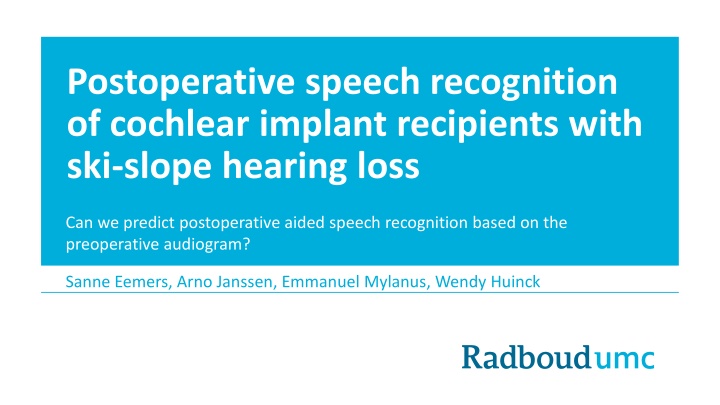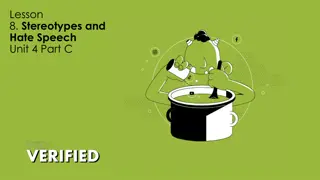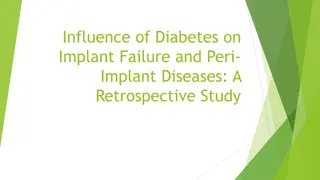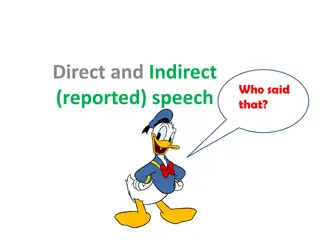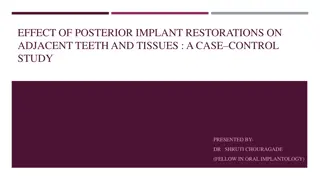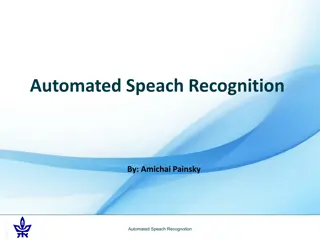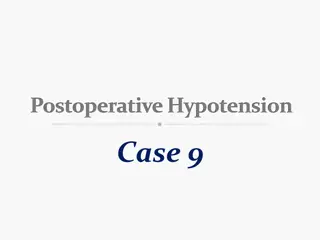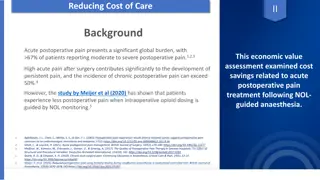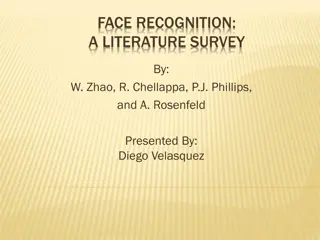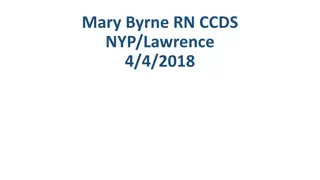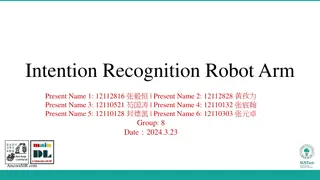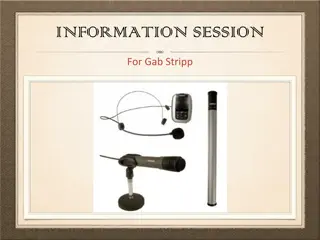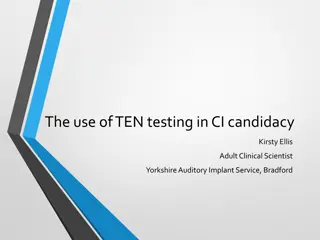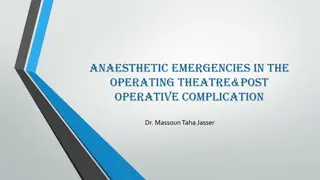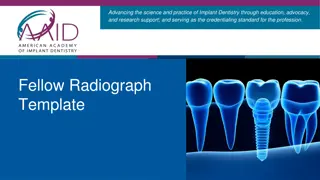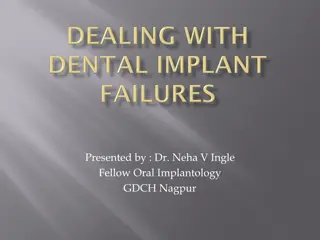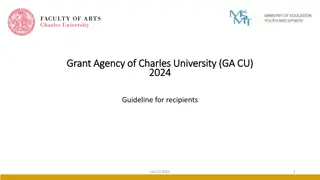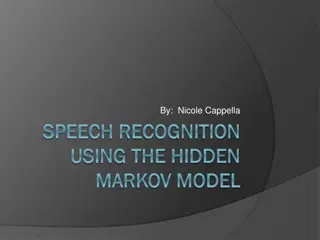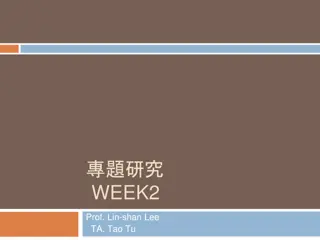Predicting Postoperative Speech Recognition in Cochlear Implant Recipients
Study on predicting aided speech recognition after cochlear implantation in individuals with ski-slope hearing loss based on preoperative audiograms. Methods, results, and correlations analyzed.
Download Presentation

Please find below an Image/Link to download the presentation.
The content on the website is provided AS IS for your information and personal use only. It may not be sold, licensed, or shared on other websites without obtaining consent from the author.If you encounter any issues during the download, it is possible that the publisher has removed the file from their server.
You are allowed to download the files provided on this website for personal or commercial use, subject to the condition that they are used lawfully. All files are the property of their respective owners.
The content on the website is provided AS IS for your information and personal use only. It may not be sold, licensed, or shared on other websites without obtaining consent from the author.
E N D
Presentation Transcript
Postoperative speech recognition of cochlear implant recipients with ski-slope hearing loss Can we predict postoperative aided speech recognition based on the preoperative audiogram? Sanne Eemers, Arno Janssen, Emmanuel Mylanus, Wendy Huinck
Introduction CI indications have been expanded Specific group with large outcome variation: ski-slope hearing loss Rehabilitation of ski-slope hearing loss Conventional hearing aids: limited restoration of speech perception (Kim et al., 2022; Mauch & Boyd, 2016) Cochlear implantation: Early-stage: longer duration of deafness leads to poorer CI outcomes and challenging adaptation to high-frequency sounds (Blamey et al., 1992; Gantz et al., 1993; Green et al., 2005; van Dijk et al., 1999) Wait: risk of losing residual hearing
Introduction Decision for cochlear implantation largely depends on predicted outcome Objective: Better predict CI outcomes of patients with ski-slope hearing loss Preoperative audiograms Postoperative aided speech recognition at 55 and 65 dB SPL (CI-only, CVC; NVA) (Bosman, 1989; Bosman & Smoorenburg, 1992)
Methods Retrospective study Unilateral CI users with ski-slope hearing loss (n = 103) < 50 dB HL at two consecutive low frequencies (125 - 500 Hz) > 80 dB HL at 2 kHz and higher frequencies Radboudumc CI user pool Implanted > 1 and < 15 years ago
Methods Preoperative audiograms Slope Steepness (dB/Hz) Frequency corresponding to max. slope Severity of hearing loss 0.25 and 0.5 kHz 1, 2 and 4 kHz Correlation analysis: postoperative speech recognition
Results Slope steepness (dB/Hz) Steeper slope poorer post-op speech recognition N = 23; r = -.52; p = .012 N = 103; r = -.22; p = .029
Results Frequency corresponding to maximum slope Max. slope located at higher frequency better post-op speech recognition (trend) N = 2; 14; 7, p = .063 N = 20; 53; 30, p = .088
Results Severity of preoperative hearing loss at .25 and .5 kHz No significant correlations N = 23; r = -.03; p = .881 N = 103; r = -.02; p = .877
Results Severity of preoperative hearing loss at 1, 2 and 4 kHz More elevated thresholds poorer post-op speech recognition (55 dB SPL) No correlation at 65 dB SPL N = 23; r = -.42; p = .045 N = 103; r = .08; p = .448
Discussion Better postoperative speech recognition prognosis: Gentle slope Maximum slope located towards higher frequencies Stronger effects observed on 55 dB SPL as compared to 65 dB SPL Ceiling effect Early implantation recommended Advanced hearing preservation in surgery Electric-acoustic stimulation (EAS) (Dhanasingh & Hochmair, 2021)
Discussion Limitations Radboud CI user pool only Speech recognition in quiet, CI-only Duration of hearing loss (definition?) Further research on CI users with ski-slope hearing loss: Effect of loss of residual hearing on CI outcomes Other CI outcomes (quality of life, sound quality, music appreciation) Similarities in MAP settings Optimal fitting?
References Blamey, P. J., Pyman, B. C., Clark, G. M., Dowell, R. C., Gordon, M., Brown, A. M., & Hollow, R. D. (1992). Factors Predicting Postoperative Sentence Scores in Postlinguistically Deaf Adult Cochlear Implant Patients. Annals of Otology, Rhinology & Laryngology, 101(4), 342 348. Bosman, A. J. (1989). Speech perception by the hearing impaired: Thesis Universiteit van Utrecht. Bosman, A. J., & Smoorenburg, G. F. (1992). Woordenlijst voor spraakaudiometrie. Handleiding bij Compact Disc uitgebracht onder auspici n van de NVA. (pp. 1 12). Dhanasingh, A., & Hochmair, I. (2021). EAS-Combined electric and acoustic stimulation. Acta oto-laryngologica, 141(sup1), 22 62. Gantz, B. J., Woodworth, G. G., Knutson, J. F., Abbas, P. J., & Tyler, R. S. (1993). Multivariate Predictors of Audiological Success with Multichannel Cochlear Implants. Annals of Otology, Rhinology & Laryngology, 102(12), 909 916. Green, K. M. J., Julyan, P. J., Hastings, D. L., & Ramsden, R. T. (2005). Auditory cortical activation and speech perception in cochlear implant users: Effects of implant experience and duration of deafness ScienceDirect. Hearing Research, 205(1 2), 184 192. Kim, Y., Han, J. H., Yoo, H. S., & Choi, B. Y. (2022). Molecular aetiology of ski-slope hearing loss and audiological course of cochlear implantees. European Archives of Oto-Rhino-Laryngology. Mauch, H., & Boyd, P. (2016). Electro-Acoustic Stimulation An option when hearing aids are not enough. RevistaM dicaCl nica Las Condes, 27(6), 776 786. Van Dijk, J. E., van Olphen, A. F., Langereis, M. C., Mens, L. H. M., Brokx, J. P. L., & Smoorenburg, G. F. (1999). Predictors of Cochlear Implant Performance. Audiology, 38(2), 109 116.
